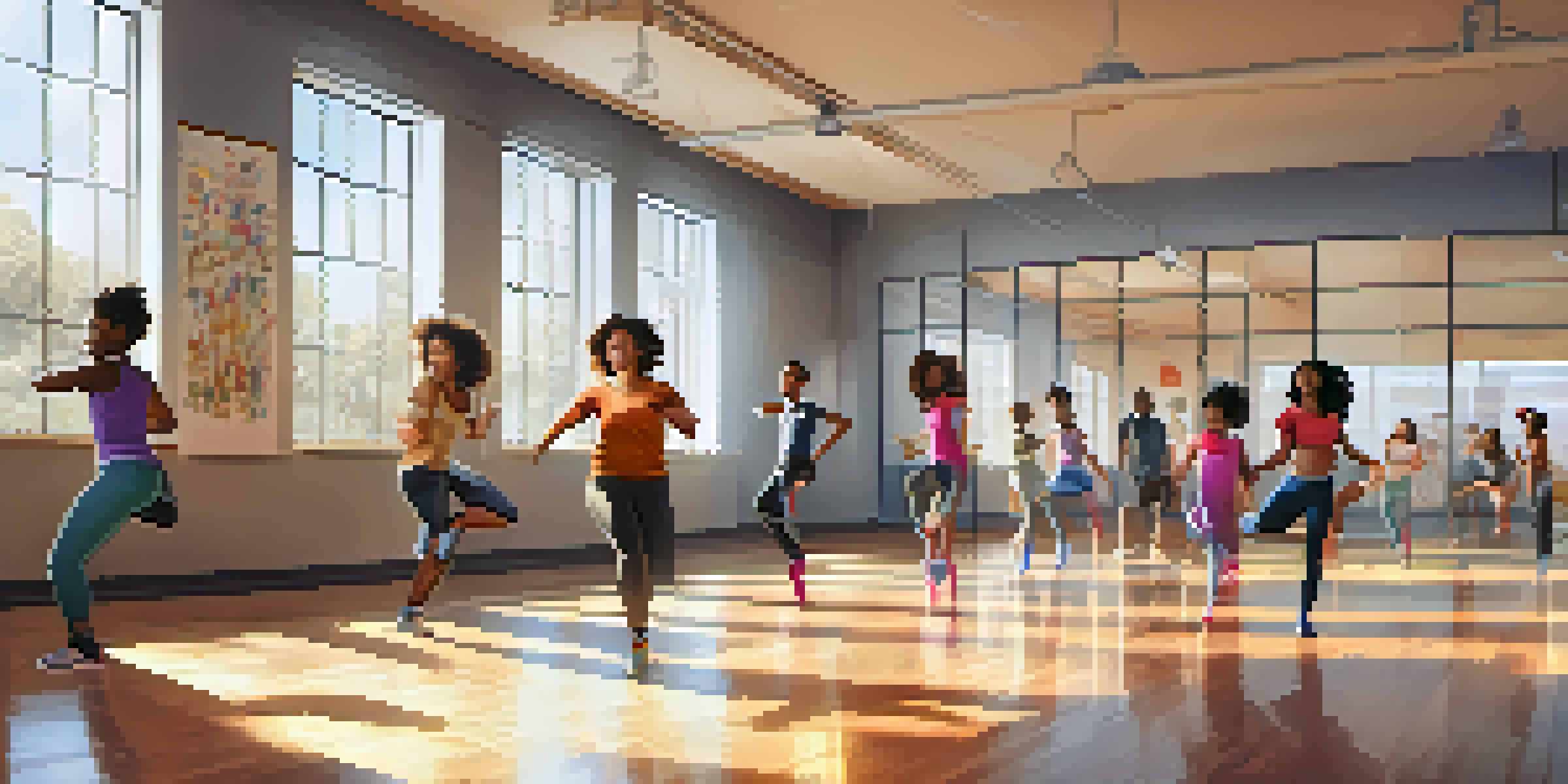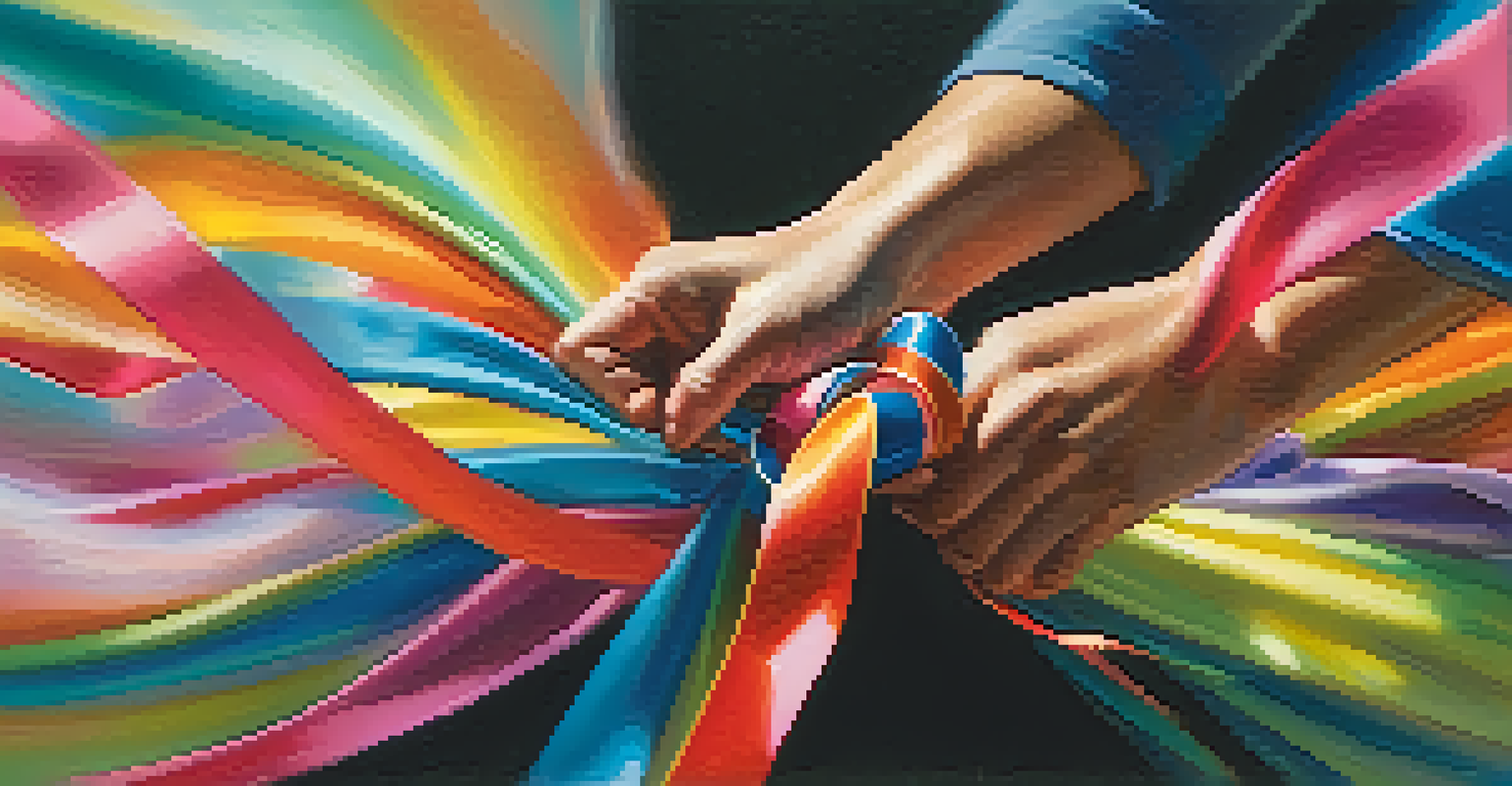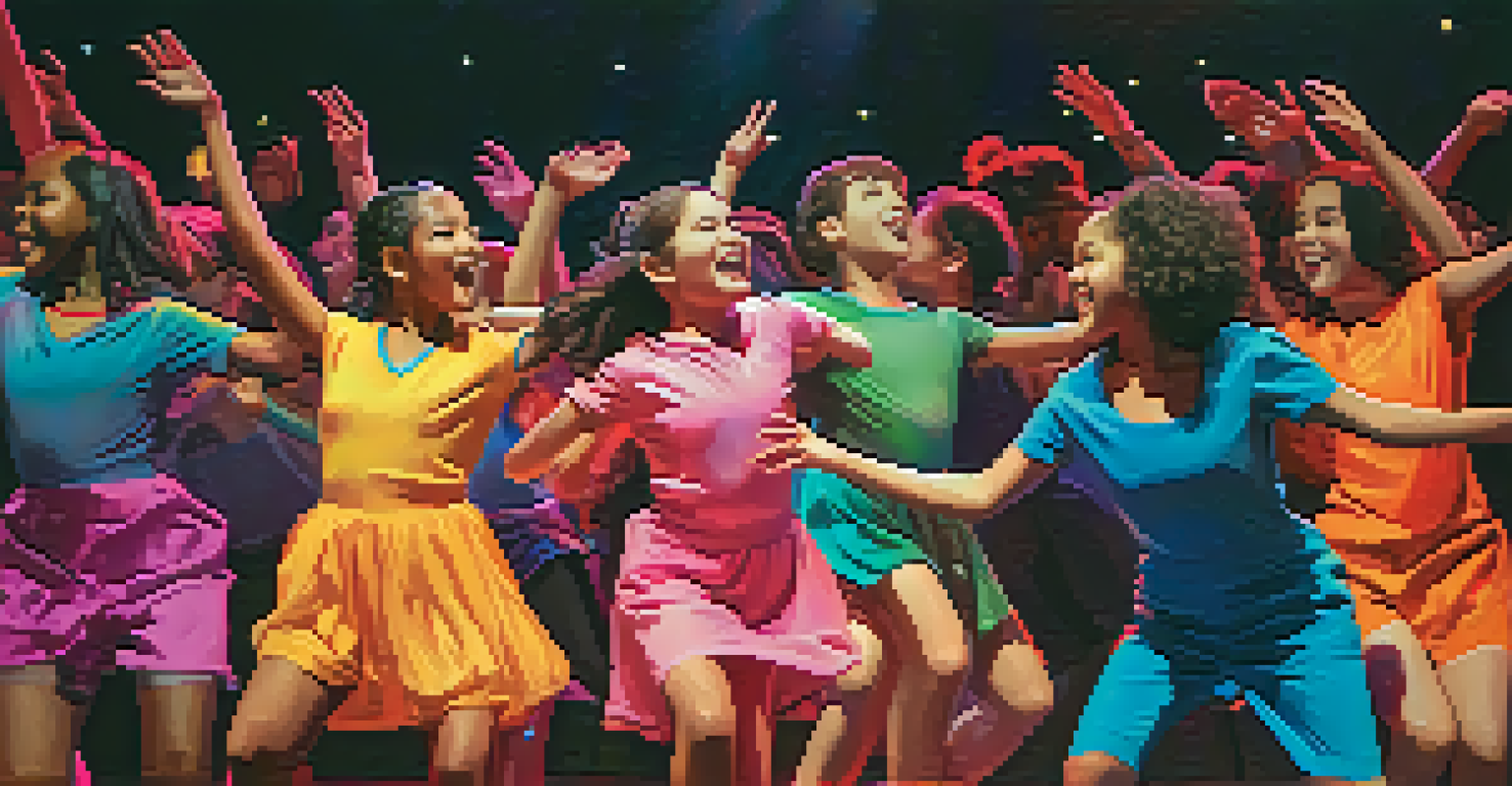Building Confidence Through Dance for Neurodiverse Youth

Understanding Neurodiversity and Its Unique Challenges
Neurodiversity encompasses a variety of neurological conditions, including autism and ADHD. Each individual experiences the world differently, bringing unique strengths and challenges. For many neurodiverse youth, social interactions can be particularly daunting, leading to feelings of isolation or anxiety. Understanding these nuances is the first step in creating supportive environments that foster growth and confidence.
Dance is the hidden language of the soul.
Dance can serve as a powerful tool to bridge these gaps. It allows young people to express themselves in a non-verbal way, which can be especially beneficial for those who struggle with traditional forms of communication. By engaging in dance, neurodiverse youth can connect with others, build friendships, and express their emotions freely. This shared experience can greatly reduce feelings of loneliness, promoting a sense of belonging.
Moreover, the rhythmic nature of dance can provide predictable patterns that many neurodiverse individuals find comforting. This predictability can ease anxiety, making it easier for them to engage with others. As they learn and grow through dance, they begin to develop valuable social skills and boost their self-esteem.
The Therapeutic Benefits of Dance for Self-Expression
Dance is not just about movement; it's a form of self-expression that can be incredibly liberating. For neurodiverse youth, it provides an avenue to communicate feelings and thoughts that might otherwise remain unexpressed. Through dance, they can explore their identities and emotions in a supportive environment, which can be both healing and empowering.

Engaging in creative activities like dance encourages emotional regulation. Participants learn to channel their feelings into movement, which can help them process emotions more effectively. This can lead to improved mood and reduced anxiety, making dance a beneficial practice for mental wellness.
Dance Enhances Self-Expression
Dance provides a liberating avenue for neurodiverse youth to communicate emotions and explore their identities.
Additionally, participating in dance can foster a sense of accomplishment. As youth learn new techniques and choreography, they experience a tangible sense of progress. This achievement reinforces their belief in their capabilities, building a foundation of confidence that extends beyond the dance floor.
Creating an Inclusive Dance Environment
To maximize the benefits of dance for neurodiverse youth, it's crucial to create an inclusive and welcoming environment. This starts with understanding the diverse needs of each participant and adapting classes to ensure everyone feels comfortable and supported. Educators can incorporate various teaching methods, such as visual aids or hands-on demonstrations, to cater to different learning styles.
The greatest disability of all is the inability to see the uniqueness in each individual.
Encouraging a non-judgmental atmosphere is also vital. When youth feel safe to express themselves without fear of criticism, they're more likely to engage fully in the experience. This can be achieved by celebrating individual progress and promoting teamwork, helping to build a community where everyone feels valued.
Moreover, establishing routines within dance classes can help neurodiverse youth feel secure. Predictable structures allow them to know what to expect, reducing anxiety and fostering a sense of control. This stability can make a significant difference in their willingness to participate and express themselves.
The Role of Community in Building Confidence
Community plays a crucial role in the development of confidence among neurodiverse youth. Dance classes provide a platform for social interaction, helping them to form connections with peers who share similar interests. These relationships can foster a sense of belonging, which is essential for building self-esteem.
Participating in group performances or showcases can further enhance this sense of community. Working together toward a common goal allows youth to experience teamwork and collaboration, which are important life skills. The shared excitement and support during performances can be incredibly uplifting, reinforcing their confidence in their abilities.
Community Builds Confidence
Participation in dance fosters relationships and teamwork, essential for boosting self-esteem among neurodiverse youth.
Furthermore, involving families in the dance journey can strengthen the support network. When parents and caregivers participate, they gain insights into their child's experiences, fostering understanding and encouragement. This holistic approach to support can significantly boost the confidence of neurodiverse youth.
Celebrating Individual Progress in Dance
One of the most rewarding aspects of dance is the opportunity to celebrate individual progress. Every dancer, regardless of their background, has unique strengths and challenges. Recognizing these individual journeys can instill a sense of pride and accomplishment, which is essential for building confidence.
Teachers can highlight personal achievements, no matter how small, to motivate students. Celebratory moments, such as sharing performances or showcasing new skills, can create an atmosphere of positivity and encouragement. This reinforcement can inspire neurodiverse youth to push their boundaries and embrace new challenges.
Creating a culture of celebration also helps to shift the focus from comparison to personal growth. Instead of competing with others, dancers can learn to appreciate their unique paths. This mindset fosters resilience, encouraging them to embrace setbacks as opportunities for learning.
Using Dance to Improve Social Skills
Dance naturally encourages social interaction, making it an effective tool for improving social skills among neurodiverse youth. Through partner work and group activities, participants learn to communicate non-verbally and develop empathy towards others. These interactions can help them navigate social situations more confidently in everyday life.
Additionally, dance often involves following cues and responding to the movements of others, which can enhance awareness of social dynamics. This practice allows youth to understand and interpret body language, an important aspect of effective communication. With time, these skills can translate to improved relationships outside of the dance studio.
Creating Inclusive Environments
An inclusive dance environment, tailored to diverse needs, promotes comfort and encourages full participation.
Furthermore, dance can serve as a common ground for building friendships. Shared interests create bonds, making it easier for neurodiverse youth to connect with their peers. As they work together in a dance setting, they cultivate teamwork and collaboration skills, further enriching their social experiences.
Inspiring Future Generations Through Dance
As neurodiverse youth gain confidence through dance, they can inspire others in their communities. Their journeys of self-discovery and growth can serve as powerful examples for peers facing similar challenges. By sharing their experiences, they can motivate others to embrace their uniqueness and pursue their passions.
Moreover, fostering confidence in neurodiverse youth through dance can lead to increased advocacy and awareness. As they step into their power, they become advocates for inclusivity and acceptance, helping to reshape perceptions of neurodiversity within broader society. This ripple effect can create more inclusive environments for future generations.

Ultimately, by investing in dance programs for neurodiverse youth, we are not just building confidence; we are nurturing a culture of acceptance and appreciation for diversity. These empowered youth can pave the way for a brighter future, where everyone is celebrated for who they are, and where the joys of dance are accessible to all.